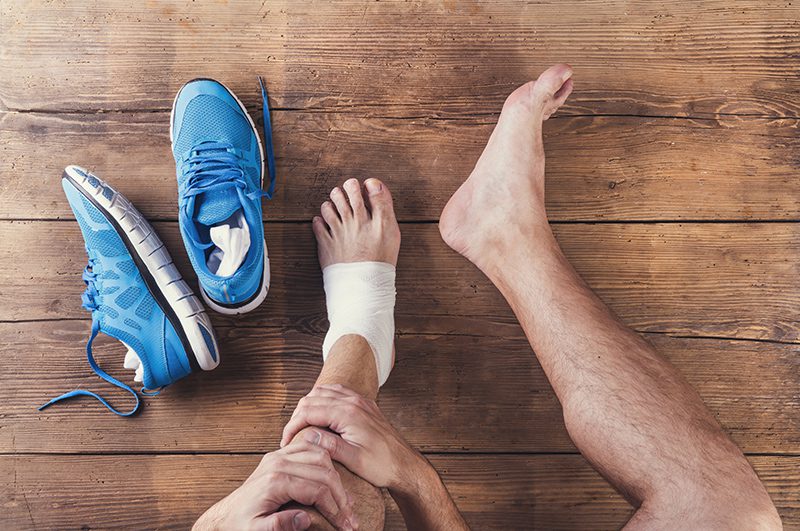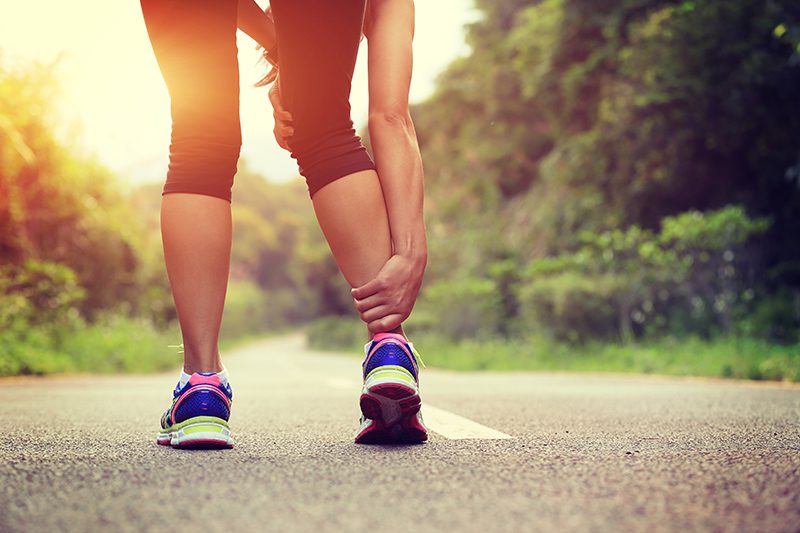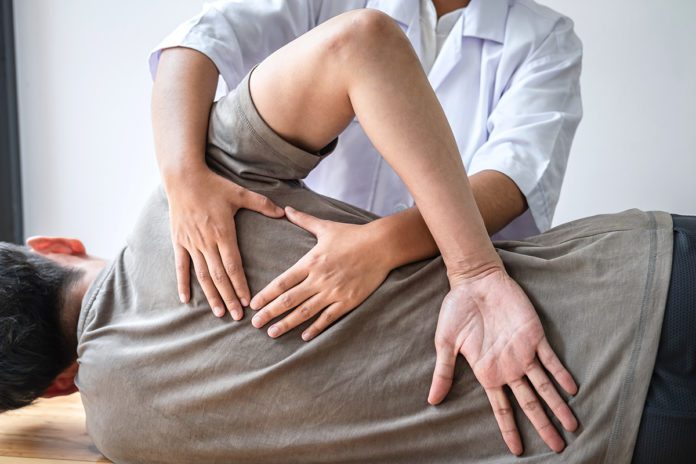10 Most Common Sports Injuries
Whether you are a highly-trained athlete or a beginner just starting out, there’s no doubt about it; you’re probably going to experience a couple of sports injuries in your life. Whether it’s from a lack of proper stretching, a pulled muscle, or just an accident, unfortunately, injuries are bound to happen no matter what you do and can sometimes be life-threatening. For that reason, it’s important to research the most common injuries that you may experience while playing sports so that you can better understand how to treat them or seek medical help if they do occur. So for today, we’re going to talk all about sports injuries.
From sprains to knee injuries, stress fractures to broken bones, today, we’re going to go over an in-depth list of the top 10 most common sports injuries, a few recommended treatment options, and what cautionary measures you can take to help avoid sports injuries overall. Let’s get started.
Treating Sports Injuries
From basketball players to family physicians, injuries are common. Some are tiny tears in muscles, golf elbow, and pulled muscles, while others could be more serious like a stress fracture, injuries to the achilles tendon or rotator cuff issues that require more time to heal.
If you would like to alleviate discomfort and pain with a topical treatment, you can try Joint Mud. It contains 27 organic ingredients and has been clinically proven to reduce joint problems by up to 74% within the first 18 minutes.
If you prefer a capsule form, Natural Joint can help you with your knees, hips, shoulders, elbows, neck, and hands. It is also 100% plant-based and will improve your joint & bone health.
1. Patellofemoral Syndrome
To start, one of the most common sports injuries is Patellofemoral Syndrome. Most commonly referred to as “runner’s knee,” this injury can best be described as intense pain near the front of your knee around your patella that is common in people who participate in sports that involve either jumping or running. A few of the most common symptoms that you may be experiencing this knee injury include:
- Pain when bending the knee (such as sitting or squatting)
- A cracking or popping noise when walking
- Pain when extending the leg
With that said, proper stretching and warming up can help to prevent this and other knee injuries from happening. Not to mention, wearing the right shoes and doing a more gradual increase in an activity instead of all at once can reduce your risk of experiencing this injury.
For treatment options, simple home treatments such as rest and ice often help to relieve pain, but sometimes physical therapy is needed in order to correct muscle imbalances. For this reason, it’s best to talk to a doctor about the appropriate treatment option for your individual injury for a more accurate diagnosis. For more on Patellofemoral Syndrome and other common knee injuries, be sure to check out healthline.com for more information.
2. Shoulder Injury
Next on the list of most common sports injuries is a shoulder injury. From sprains to dislocations, shoulder injuries are one of the most versatile injuries that athletes experience. Most shoulder injuries are typically caused by the overuse of muscles and tendons that are around the shoulder area. This can easily be caused by participating in sports that require overhead movement, such as swimming, volleyball, or tennis. A few common symptoms that you may be experiencing a shoulder injury might include:
- Certain arm movements may cause pain
- You experience a decreased range of motion
- You experience a feeling of looseness in the shoulder
- Bruising or other outward damages may be visible on the shoulder
With that said, when it comes to the treatments for shoulder injuries, proper rest and frequent icing to the injured area are often recommended to help reduce swelling and pain. However, since shoulder injuries can all vary in level of severity and cause, they may also require medical attention. Therefore, it’s best to check with your doctor for proper treatment to ensure you do not cause further damage to your shoulder.
3. Shin Splints
Next, one of the most frequent sports injuries that most athletes will experience in their life is shin splints. Shin splints can best be described as the inflammation of the muscles, tendons, and bone tissue around your tibia or lower leg bone. Known to be one of the most common overuse injuries in sports, shin splints typically come as a result of overworking the muscles located around the shin bone, which can cause severe damage and strain to your lower leg. However, shin splints can also occur as a result of a rapid increase in activity, improper stretching before a run, or a lack of proper shoes.

With that said, because of the nature of this injury, shin splints are most often found in runners or athletes that play sports that require a lot of running, such as football or soccer. Therefore, if you have shin splints, you may experience symptoms such as:
- Tenderness or pain along the shin bone
- Pain after activity or walking
- A sharp aching in the inner lower part of the leg
Now, when it comes to the treatment option, minor shin splints can typically be treated at home with proper rest and frequent icing. However, if the pain is severe, it is best to see a doctor, as anti-inflammatory medication can be prescribed to help alleviate intense pain properly.
4. Concussion
Next, another common injury that frequently happens in sports is a concussion. A concussion is a severe injury that is caused by a sudden or harsh blow to the head where the brain is roughly shaken or twisted. When this happens, severe damage to the brain cells can occur and can leave the individual incredibly confused, nauseous, and disoriented.
With that said, due to the nature of these injuries, concussions can happen as a result of any physical activity but are typically most common with contact sports such as football, basketball, or hockey. Common symptoms that you may be experiencing a concussion include:
- Dizziness
- Slurred speech
- Headache
- Confusion
- Nausea and/or vomiting
- Sensitivity to light
With that said, when it comes to treatment options, concussions are a very serious injury and should only be handled by a doctor with close monitoring. Only when given an OK by a doctor, can you slowly begin increasing physical activities, as long as symptoms do not return. With that said, do not attempt to treat a concussion yourself as they do require proper treatment from a medical doctor and can not be fixed by home remedies. You can read more about the severity of concussions and their proper treatment options here on mayoclinic.org.
5. Sciatica
Next, Sciatica is a severe pain that travels down the sciatic nerve in the back of the leg and down to the feet. Often only affecting one side of the body, Sciatica often leaves these areas feeling numb as a result of a pinched nerve or a bulging disc. Due to the nature of this injury, Sciatica is most commonly associated with sports involving repetitive lifting, twisting, or bending, such as golf, tennis, cycling, or weight-lifting.

A few signs you may be experiencing Sciatica include:
- Numbness or tingling down the leg
- A feeling of stabbing or burning along the spine and down the leg
- Severe pain in your lower back when you sit or stand
- Sharp and sudden jolts of pain in your back and leg
- Trouble controlling bowels
With that said, when it comes to the treatment options for Sciatica, it is often recommended to do slow stretching movements of the back and hamstrings to help alleviate the symptoms. However, if the pain is severe or if you experience severe numbness or tingling, seeking out a medical professional, such as a physical therapist, is the best option to overcome your pain safely and effectively.
6. Groin Pull
Next, a groin pull, also commonly referred to as groin strain, is another one of the most frequent sports injuries that happen as a result of putting severe stress on the inner thigh muscles around your groin. When this happens, groin muscles are often overstretched or torn as a result of quick side-to-side movements, which can result in severe pain and limited mobility. Due to the nature of this injury, groin pulls are most common in contact sports that require a lot of running, jumping, and frequent side-to-side motion, such as soccer, basketball, football, or hockey.
A few signs that you may be experiencing groin pull include:
- Sharp pain in the groin area
- Difficulty with lateral movements
- Pain when you bring your legs together
- Pain when you raise your knee
With that said, when it comes to the treatment options of a groin pull or groin injury, it is typically recommended to ice the injured area and rest as much as possible throughout the next several days without putting any strain on it. After a few days, some light range of motion exercises is often recommended to help further alleviate pain in the affected area. However, talking to a licensed professional is the best way to receive a proper diagnosis for your unique symptoms to ensure you do not cause any further damage to your injury.
7. Hip Flexor Strain
Next, hip flexors are another one of the most common sports injuries that occur in the upper front side of your thigh. The function of the hip flexor muscles is to be able to lift the knee toward your chest, as well as assist in moving your leg inward and outward. Therefore, when you experience hip flexor strain, it means that your hip flexor muscles have been stretched too far and have become torn, which can cause severe spasms in your leg and limit your range of motion. This is most commonly caused by overdoing exercises or overstretching to the point of compromising your mobility.
In regards to sports, hip flexor injuries are most commonly caused by cardio activities such as sprinting, as well as sports that require quick turns and sudden stops. A few of the most common signs that you may be experiencing hip flexor strain include:
- Pain with raising the leg
- Bruising in the front of the upper thigh and groin area
- Pain in the front of the hip
- Walking with a limp
- Severe spasms and swelling
With that said, hip flexor injuries are best treated by rest and icing for 15 to 20 minutes at a time. After a few days, performing heel slides and hip flexor stretches are commonly recommended by doctors, depending on the patient’s unique case. With that said, the individual experiencing this should always seek out professional help prior to self-treatment to ensure it is the appropriate measure to take to alleviate the pain and help to heal the strain.
8. ACL Tear or Strain
Next, ACL tear, also known as Anterior Cruciate Ligament tear, is the stretching or tearing of the anterior cruciate ligament, which is known to be one of the major stabilizing tissues of the knee. The most common cause of ACL in regards to sports injuries is changing directions too quickly, jumping, or pivoting. Therefore, athletes that play in contact sports such as basketball, football, soccer, or skiing are at a much higher risk of experiencing this. A few of the most common symptoms that you may be experiencing ACL injury include:
- A popping sensation in the knee
- Rapid swelling of the knee
- Loss of range of motion
- The inability to carry any weight on your knee
With that said, according to research, a slight ACL injury can be healed naturally with rest and proper precautionary measures. However, a complete tear would require surgery before the athlete would be able to return to activity. Therefore, talking with a doctor would be the best option for getting you back on track with your mobility in the shortest amount of time possible.
9. Hamstring Strain
The next common sports injury we wanted to cover in this piece is a hamstring strain. When an athlete experiences a strain here, it means there is a tear to the tendons or muscles on the back of the thigh, which can cause severe pain to the thigh and leg muscles. This is typically caused by things such as overstretching or playing sports that require sudden movements with a high impact, such as lunging or jumping.
With that said, a few of the most common symptoms of a hamstring strain or pulled hamstrings include:
- Sudden pain during leg movement or exercise
- Pain in the back of the thigh when walking
- Pain when straightening the leg
- Tenderness or bruising around the area
Now, when it comes to treatment options for an injured hamstring, it is commonly recommended to gently ice the affected area, followed by light stretching and strengthening exercises to prevent further injury. However, if the pain persists for several weeks, it is recommended to see a physical therapist who may be able to use ultrasound or other professional methods to promote healing to the muscle.
10. Sprained Ankle
And last on our list of the most common sports injury that athletes experience is a sprained ankle. A sprained ankle happens when the ankle twists in a weird or awkward way beyond its normal range of motion. This can stretch and tear the ligaments that help hold your ankle bones together and cause intense pain and swelling. Due to the nature of this injury, sprained ankles can happen in any sport but are most common in those that require a lot of jumping and running.
With that said, some symptoms that you may be experiencing a sprained ankle include:
- Pain upon putting weight on your foot
- Swelling or bruising around the ankle
- Restricted range of motion
- Popping sensation when you try to move it
That being said, to prevent ankle sprains, it is essential to make sure you stretch and do warm-ups before playing any sport or taking part in any exercise, as this can help to better stretch out the muscles and reduce the likelihood of experiencing an ankle sprain.
For treatment options, treatment is typically determined based on the severity of the sprain, but it is overall recommended to keep your weight off of it as much as possible as well as ice it to help keep the swelling down. However, making an appointment with your healthcare provider would be the best way to determine the most appropriate treatment option as they will be able to provide medical advice for your individual sprain.
Conclusion
In conclusion, some sports injuries are unavoidable and are bound to happen no matter what you do. However, you can also limit your chances of experiencing them by doing your part to take care of your body. Whether it’s jumper’s knee, hamstring strains, tennis elbow, or a high ankle sprain, taking a few minutes to stretch and warm-up ahead of time are sure ways to help combat the chances of sports injuries. Above all else, just remember to be careful and smart in all sports activities you take part in so that you can play sports as safely as possible and help to better prevent injury for many years to come.
Sources:
https://www.webmd.com/fitness-exercise/shin-splints#1
https://my.clevelandclinic.org/health/diseases/12792-sciatica
https://www.unitypoint.org/livewell/article.aspx?id=591d8cf1-1ee5-4cb3-b662-a5f21f6f13bc
https://rollinghillsmedical.com/list-of-sports-injuries-top-10-in-athletes/
https://www.polarisspine.com/blog/8-most-common-sports-injuries
https://www.mayoclinic.org/diseases-conditions/concussion/symptoms-causes/syc-20355594


